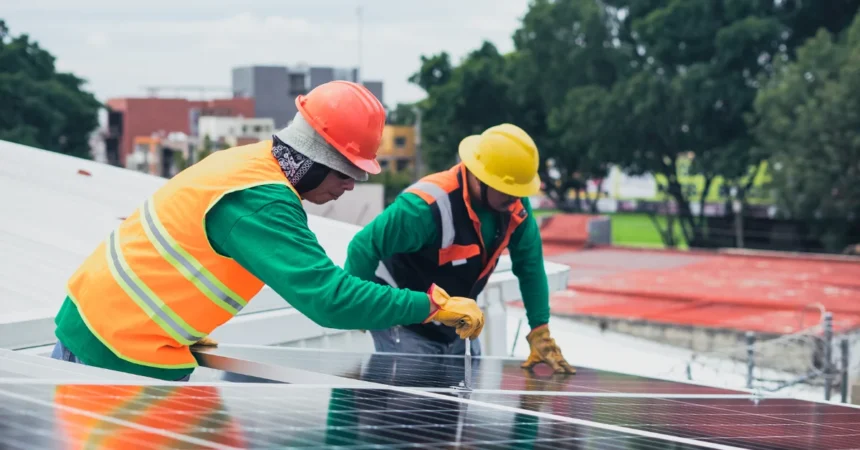China has long been recognized as a global leader in solar energy production. Over the past decade, the country has invested heavily in solar infrastructure, research, and development, positioning itself as the world’s largest producer and installer of solar panels. However, in 2024, China’s solar sector faces a new challenge: oversupply.
Once lauded for its rapid growth and global dominance in solar energy, China’s solar industry is now grappling with an excess of production capacity. The oversupply has resulted in plummeting prices, creating challenges for manufacturers and raising concerns about the future sustainability of the sector. While the global demand for renewable energy continues to rise, China’s solar industry must now confront the consequences of its success.
The Rise of China’s Solar Supremacy
China’s solar industry emerged as a global powerhouse during the early 2010s. The Chinese government, recognizing the importance of renewable energy in combating climate change and reducing the country’s reliance on coal, invested heavily in solar power. This investment came in the form of subsidies, tax incentives, and financing for both domestic and international projects.
China’s dominance in the solar market was solidified through its ability to mass-produce solar panels at a lower cost than many of its competitors. The country’s manufacturing capabilities, combined with government support, allowed Chinese companies to flood the global market with affordable solar products. By 2020, China was responsible for producing over 70% of the world’s solar panels, a staggering figure that demonstrated its supremacy in the sector.
This period of rapid expansion was accompanied by an increase in domestic solar installations. China installed a record number of solar power plants and rooftop solar systems, leading the world in both production and consumption of solar energy. The country’s ambitious renewable energy targets, including a commitment to reach carbon neutrality by 2060, further fueled the growth of the solar industry.
The Shift from Boom to Bust
While China’s solar industry thrived for much of the past decade, the landscape has shifted dramatically in recent years. The primary issue facing the industry in 2024 is oversupply. The combination of aggressive expansion in production capacity and a slower-than-expected increase in global demand has led to an excess of solar panels on the market.
The oversupply problem can be traced back to several factors. First, Chinese manufacturers, eager to capitalize on the growing global demand for renewable energy, ramped up production to unprecedented levels. The country’s solar panel production capacity far exceeded that of other major producers, such as the United States and Europe. However, as the global market became saturated with Chinese-made solar panels, demand began to taper off.
At the same time, technological advancements have led to increased efficiency in solar panels, meaning that fewer panels are needed to generate the same amount of electricity. This reduction in demand for new panels has compounded the oversupply issue, as manufacturers continue to produce at high levels despite declining orders.
Another contributing factor to the oversupply crisis is the phasing out of government subsidies. For years, China’s solar industry was heavily reliant on government support to maintain its growth. However, as the industry matured, the Chinese government began to reduce these subsidies, forcing companies to rely more on market forces. This shift has created financial strain for many manufacturers, particularly smaller companies that are less able to compete with larger, more established firms.
The Impact of Falling Prices
One of the most immediate consequences of the oversupply in China’s solar industry has been a sharp decline in prices. The price of solar panels has dropped significantly over the past two years, making it more difficult for manufacturers to turn a profit. While lower prices may seem like a positive development for consumers and renewable energy advocates, they have created serious challenges for the industry.
For manufacturers, the decline in prices has resulted in shrinking profit margins. Many companies are now struggling to cover their production costs, leading to layoffs, factory closures, and consolidation within the industry. Smaller manufacturers, in particular, have been hit hard by the price collapse, as they lack the financial resources to weather the downturn.
The falling prices have also led to increased competition within the industry. Companies are now forced to differentiate themselves not only on price but also on quality, efficiency, and innovation. This has spurred a wave of technological advancements in the solar sector, as companies invest in research and development to stay competitive. However, the pressure to innovate while maintaining profitability has placed a strain on manufacturers, particularly those already operating on thin margins.
Global Implications of China’s Solar Oversupply
The oversupply crisis in China’s solar industry has significant implications for the global renewable energy market. As the world’s largest producer of solar panels, China plays a critical role in shaping the global supply chain for solar products. The current oversupply has led to a glut of low-cost solar panels on the market, which could have both positive and negative effects on the global transition to renewable energy.
On the positive side, the availability of cheap solar panels could accelerate the adoption of solar energy in regions where cost has been a barrier to entry. Developing countries, in particular, could benefit from the lower prices, as they seek to expand their renewable energy infrastructure. The oversupply could also help drive down the overall cost of solar installations, making solar power more accessible to a broader range of consumers.
However, there are also potential downsides to the oversupply crisis. The financial strain on Chinese manufacturers could lead to a wave of bankruptcies and consolidations within the industry. This could reduce competition and lead to fewer options for consumers, ultimately driving up prices in the long term. Additionally, the focus on producing low-cost panels could stifle innovation, as manufacturers cut back on research and development in an effort to stay afloat.
China’s Response to the Oversupply Crisis
In response to the oversupply crisis, the Chinese government and solar manufacturers are exploring various strategies to rebalance the market. One approach has been to focus on expanding domestic demand for solar energy. The Chinese government has set ambitious targets for solar installations as part of its broader efforts to reduce carbon emissions and transition to a low-carbon economy.
In 2024, China announced plans to significantly increase its solar capacity, with a goal of installing 1,200 gigawatts of solar power by 2030. This expansion is expected to create new demand for solar panels, helping to alleviate the oversupply issue. The government is also investing in upgrading the country’s power grid to better integrate renewable energy sources, which could further drive demand for solar power.
Another strategy being pursued by Chinese manufacturers is to diversify their product offerings. Rather than focusing solely on traditional solar panels, companies are exploring new technologies, such as bifacial panels, which can generate electricity from both sides of the panel, and perovskite solar cells, which have the potential to be more efficient and cost-effective than traditional silicon-based cells.
Some manufacturers are also exploring new markets for their products, particularly in regions with growing demand for renewable energy, such as Africa and Southeast Asia. These markets offer significant growth potential, as many countries in these regions are in the early stages of transitioning to renewable energy.
The Role of Innovation in Addressing Oversupply
Innovation will play a critical role in addressing the oversupply crisis in China’s solar industry. As prices continue to fall, manufacturers will need to find new ways to differentiate their products and stay competitive. This will require a renewed focus on research and development, as companies seek to improve the efficiency and durability of their solar panels.
One area of innovation that holds promise is the development of next-generation solar technologies. Bifacial solar panels, for example, are becoming increasingly popular due to their ability to generate electricity from both the front and back of the panel. This makes them more efficient than traditional solar panels, particularly in areas with high levels of sunlight.
Perovskite solar cells are another promising technology that could revolutionize the solar industry. These cells are made from a different material than traditional silicon-based cells, and they have the potential to be more efficient and less expensive to produce. While perovskite solar cells are still in the experimental stage, they could eventually provide a solution to the oversupply crisis by offering a higher-value alternative to traditional panels.
#ChinaSolar #RenewableEnergy #SolarOversupply #GlobalEnergy #GreenEnergy #SolarInnovation #EnergyTransition #RenewableSolutions







